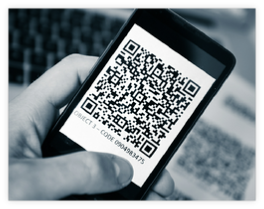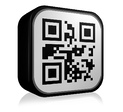

Axicon Group, Church Road, Weston on the Green, Oxfordshire, OX25 3QP, UK.
© Copyright Axicon 2001-2015




A number of different two-dimensional (2D) bar codes have been developed in the last decade or more and their application is now almost as common as that of conventional linear bar codes. The most successful types of 2D bar codes do not consist of bars at all, but instead are made up of nominally square blocks or modules which are arranged in a square or rectangular matrix pattern.
2D codes encode the same sort of data that would appear in linear bar codes, but the two-dimensional nature of these bar codes enables that same data to be encoded in a smaller area. The capacity to store larger quantities of data, than would normally be practical in linear bar codes, is also possible with 2D codes.
The types of scanners used to read linear bar codes are not necessarily able to read 2D matrix codes. Laser scanners are in common use particularly in the retail environments but 2D matrix codes cannot be read with these sorts of scanners. Instead, imaging or camera based scanners are required for 2D matrix codes and although these are now becoming more common in hand operated scanners, they are not yet as common where fixed mounted scanners are found.
QR code is another 2D matrix code that has grown in popularity.

QR CODES
Although used for many years in some industries (car manufacturing for instance), its recent popularity has grown alongside the proliferation of smart phones that are Internet enabled where QR codes have been used to give individuals rapid access to web sites.Web page links, which take the phone owner to web pages that are usually designed to display appropriately on the limited sized mobile phone displays, are encoded in 2D QR codes printed on packaging material, brochures or even on posters. The nature of the optical capabilities of the mobile phone cameras makes them suited more to reading physically large symbols on posters at a distance than to small sized codes close up, so a number of ingenious applications for advertising and marketing have been developed to catch the eye (and mobile phone cameras) of commuters and shoppers as we all go about our daily lives.